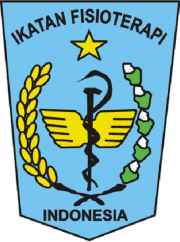An Electromyography (EMG) Analysis After Pre-Cooling Between Male and Female in Recreational Runners
Rinna Ainul Maghfiroh(1*), Kurusart Konharn(2)(1) School of Physical Therapy, Faculty of Associated Medical Sciences, Khon Kaen University
(2) Research Center in Back, Neck, Other Joint Pain and Human Performance (BNOJPH), Khon Kaen University
(*) Corresponding Author
Abstract
Background: Maintaining internal body temperature is critical for the runner’s performance. The inability to reduce the rising temperature may result in hyperthermia and muscle fatigue. Pre-cooling may lower core temperature, allowing for greater heat storage during exercise and delaying thermally-induced fatigue, as well as increased motor output through decrease electrical activity by cooling the muscles. Furthermore, there have been lack studies that compare electrical activity in muscle between gender differences in response to prolonged exercise after pre-cooling. Objective: The purpose of this study to investigate the changes in electrical activity pre and post cold water immersion (CWI) in male and female recreational runners. Methods: This case involved 2 males and 2 females aged 20 years old who are physically active runner with normal-weight BMI. The outcome was measured using electromyography (EMG) which was carried out every 4 minutes while 1st and 2nd running sessions (16 minutes). Results: Male subjects' electrical activity (mV) decreased significantly between 8 to 16 minutes and 16 to 8 minutes (p=0.04, p<0.05). But not in female subjects (p>0.05). Conclusion: It can be concluded that CWI as pre-cooling had an effect of lowering the electrical activity level in the muscle during running in both genders.
Keywords: electromyography, electrical activity, cold water immersion, gender, recreational runnerFull Text:
PDFReferences
Andersen JJ. 2019. The State of Running. https://runrepeat.com/state-of-running.
Bongers CCWG, Hopman MTE, Eijsvogels TMH. 2017. Cooling Interventions for Athletes: An Overview of Effectiveness, Physiological Mechanisms, and Practical Considerations. Temperature. 4(1):60-78.
Cameron MH. 2013. Physical Agents in Rehabilitation from Research to Practice Fourth Edition. Elsevier Saunders. Pennsylvania.
Cheuvront SN, Haymes EM. 2001. Thermoregulation and Marathon Running Biological and Environmental Influences. Sport Medicine. 31(10), 743-762.
Daanen HA, Es EM, Graff JL. 2006. Heat Strain and Gross Efficiency during Endurance Exercise after Lower, Upper, or Whole-Body Precooling in the Heat. International Journal of Sports Medicine. 27(5):379-388.
Dhananjaya JR, Veena HC, Mamatha BC, et al. 2017. Comparative Study of Body Mass Index, Hand Grip Strength, and Handgrip Endurance in Healthy Individuals. National Journal of Physiology, Pharmacy and Pharmacology. 7(6):594-598.
Drinkwater, Eric. 2008. Effects of Peripheral Cooling on Characteristics of Local Muscle. Medicine and Sport Sciences. 53, 74-88.
Gent RN, Middelkoop M, Os AG, et al. 2007. Incidences and Determinants of Lower Extremity Running Injuries in Long Distance Runners: A Systematic Review. British Journal of Sports Medicine. 41(8), 469-480.
Hurr, Chansol. 2021. Acute Local Cooling to the Lower Body during Recovery Does not Improve Repeated Vertical Jump Performance. International Journal of Environmental Research and Public Health. 18(9):5026.
Jones AM, Kirby BS, Clark IE, et al. 2020. Physiological Demands of Running at 2-Hour Marathon Race Pace. Journal of Applied Physiology. 130(2), 369-379.
Junior JR, Prado DM, Sena AF, et al. 2021. Physiological Responses during the Long-distance Race in the Warm Environment in Runners: A Pilot-study. The Journal of Sports Medicine and Physical Fitness. 61(6).
Paredes-Ruiz MJ, Jodar-Reverte M, Gonzalez-Moro IM, et al. 2021. Effects of Gender on Oxygen Saturation of Thigh Muscles during Maximal Treadmill Exercise Testing. Sport Mont. 19(1).
Ryu JH, Paik IY, Woo JH, et al. 2016. Impact of Different Running Distances on Muscle and Lymphocyte DNA Damage in Amateur Marathon Runners. The Journal of Physical Therapy Science. 28, 450-455.
Sadri K, Khani M, Sadri I. 2014. Role of Central Fatigue in Resistance and Endurance Exercises: An Emphasis on Mechanisms and Potential Sites. Sportlogia. 10(2), 65-80.
Stevens CJ, Kittel A, Sculley DV, et al. 2016. Running Performance in the Heat is Improved by Similar Magnitude with Pre-Exercise Cold-Water Immersion and Mid-Exercise Facial Water Spray. Journal of Sports Sciences. 35(8), 1-8.
Tyler CJ, Sunderland C, Cheung SS. 2013. The Effect of Cooling Prior to and during Exercise on Exercise Performance and Capacity in the Heat: A Meta-analysis. British Journal of Sports Medicine. 49(1).
Wang L, Hong Y, Li JX. 2014. Muscular Activity of Lower Extremity Muscles Running on Treadmill Compared with Different Overground Surfaces. American Journal of Sports Science and Medicine. 2(4), 161-165.
Article Metrics
Abstract view(s): 227 time(s)PDF: 213 time(s)
Refbacks
- There are currently no refbacks.







